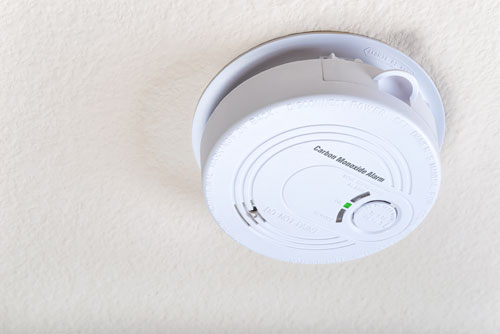

As we roll into November, many of us have already broken out our checklists for the winter season. Did remembering to change the batteries in your carbon monoxide detector make your list? If not, you’d better get to it! We’ll explain why.
The risk for carbon monoxide poisoning goes up in the winter. That’s because we’re using our home heating systems with increased frequency. Also, some of us are using additional heating equipment indoors like space heaters, using their gas stove for home supplemental heating, or improperly using gas equipment like grills or portable generators in enclosed or poorly ventilated spaces like garages, sunporches, and carports.
Carbon monoxide is dangerous and potentially lethal. Safety no matter what the appliance or piece of equipment you use should be accommodated for accordingly. We’ve put together some information so you know about it and how you can protect yourself and others in your home from it.
Carbon monoxide is often called a “silent killer,” because it is odorless and colorless.
When CO builds up in your blood, it starts to replace the oxygen in your red blood cells. The more it builds up, it starts starving critical organs like your brain, heart, and lungs of oxygen. This oxygen deprivation can cause serious, potentially permanent, injury or death.
Many CO poisonings happen at night when people are sleeping. In these situations, people can be at risk before they ever feel any symptoms.
According to the Centers for Disease Control, about 50,000 people end up in the emergency room with carbon monoxide poisoning each year, with 4,000 of them having to be hospitalized. Sadly, CO kills about 430 people a year.
The symptoms of carbon monoxide poisoning are commonly described as flu-like, with the most common symptoms being:
Everyone is vulnerable to CO poisoning, but infants, children, the elderly and people with anemia, respiratory problems or chronic heart disease are especially vulnerable.
There are several things you need to do to help protect yourself and your loved ones from carbon monoxide.
The most important line of defense is having carbon monoxide detectors in your home. There needs to be detectors on every level of your home, and outside all sleeping areas.
Change the batteries in your CO detectors when you change the batteries on your smoke detector, which you should be doing each time you change your clocks to or from Daylight Savings Time.
If your CO detector is five years old or older, it needs to be replaced.
If you use propane in your home, we urge you to install propane leak detectors as a backup in case something like rust inside your propane tank inhibits the rotten-egg smell of propane. Propane leak detectors are inexpensive and can be bought at hardware and home improvement store, or online.
Have your home heating system maintained. An annual tune-up by a professional service technician can spot problems that can lead to CO buildup in your home so they can be fixed.
Have questions about propane safety? Get in touch with us. We’ll be glad to help!